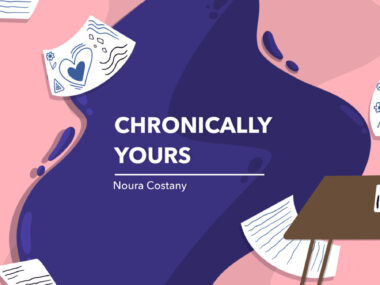Dental hygiene tips for those with Cushing’s disease
My illness can cause bone loss and damage to teeth
Written by |

Cushing’s disease takes a toll on the body, sometimes including osteoporosis and bone loss. People often forget that those symptoms might mean that teeth are affected.
Unfortunately for me, my teeth have lost some calcium, which caused dental issues. My dentist pointed out that when parts of teeth are lighter in color, it could mean calcium loss.
When I was diagnosed with Cushing’s disease in 2020, caring for my teeth wasn’t a priority. I had surgery to remove the pituitary tumor and then focused on recovery. And just when I thought I was getting better, I was hit with a second pituitary tumor. When I finally started feeling a little normal, my teeth were in trouble.
Since then, I’ve had to step up my dental care to keep my teeth. It’s been a tough process.
If you’re experiencing dental problems, please don’t feel ashamed. There’s a lot of stigma around teeth that are in poor condition, including that they’re caused by laziness. Yet not only is it harder to take care of yourself with a chronic illness, but the illness might also be a direct cause of the dental issues. While you can’t always reverse the damage, you can prevent further degradation.
Sharing my process
Today, my teeth aren’t in danger anymore and my gums no longer bleed. So I’d like to share some tips on how I got here. Make sure to consult your dentist about all of this, as they can answer any questions or address any doubts you might have.
First and foremost, I use interdental brushes. I started by getting a mixed pack so that I could better understand how big the spaces were between my teeth. Then I bought a large pack of 100 brushes with the correct size, which I use once a day. Initially, I experienced a lot of bleeding, but that’s no longer the case.
I also use a water flosser, which helps to clean anything the brushes might’ve missed. Mine comes with a little water reservoir, but you can get tubeless ones that fit in your hand. (In hindsight, I think I might’ve preferred the tubeless ones, because I wouldn’t have to hover over the sink the entire time.) When I’m feeling unwell, I usually forgo this part of the routine.
Next, I use two types of toothpaste with my electric toothbrush: a whitening one and a fluoride one. The electric toothbrush is great because it does most of the work for me. Truth be told, my dentist prescribed only fluoride toothpaste, but it tastes awful, so my trick is to add a bit of minty, whitening toothpaste.
I also use a tongue scraper, which is the hardest part of my routine. Since having Cushing’s, I’ve developed a horrible gag reflex, so I start at the bottom of my tongue, scrape, and work my way up. If I start to gag, I’ll stop and take a break.
Finally, I use Aquaphor lip care. My mouth is always dry from medications, and Aquaphor seems to be the only thing that helps.
Some days I can’t handle the entire routine because I’m either too weak or too dizzy. When this happens, my husband brings everything to me and I slowly do what I can. When I’ve reached my limit, I scrap everything that’s left and just use mouthwash and an interdental brush. It’s not ideal, but doing something is better than doing nothing.
Dental care can be a daunting task, especially if you’re behind in the game. But there are ways to get yourself to a better place, so please don’t give up.
I hope you find my dental tips helpful. Feel free to share your own in the comments below. You can also follow my journey on TikTok and YouTube.
Note: Cushing’s Disease News is strictly a news and information website about the disease. It does not provide medical advice, diagnosis, or treatment. This content is not intended to be a substitute for professional medical advice, diagnosis, or treatment. Always seek the advice of your physician or other qualified health provider with any questions you may have regarding a medical condition. Never disregard professional medical advice or delay in seeking it because of something you have read on this website. The opinions expressed in this column are not those of Cushing’s Disease News or its parent company, Bionews, and are intended to spark discussion about issues pertaining to Cushing’s.






Jenifer Williams
I have Cushing's Disease and I am also a former PA certified dental assistant. I was so disappointed in myself after my initial pituitary surgery because of all the cavities I developed after recovery. I always took great pride in my cavity-free reputation with my dentist ever since I was a kid! But a lot of the issue was lack of care due to extreme fatigue. You are doing all the right things! Keep smiling!
Noura Costany
Thank you, friend! Much appreciated <3
Juliana Ubick
I haven’t been diagnosed with cushing’s yet which is why I want to go back to the Mayo Clinic. My endocrinologist has already mentioned it. It’s also where I was diagnosed with functional neurological disorder about 1.5 years ago which the cushing’s may have triggered. I’ve had problems with my gag reflex for several years which is why I haven’t been to the dentist in several years. I’d need anesthesia for them to do it which I find ridiculous but am wondering if it would be necessary because not going isn’t good from what I’ve always been told. I wanted to tell you that Colgate makes toothpaste and mouthwash that prevents food from sticking to the teeth and gums for 12 hours which would help on the bad days. I hope you start feeling better.
Noura Costany
I'll look into colgate! And nothing is ridiculous if it helps <3